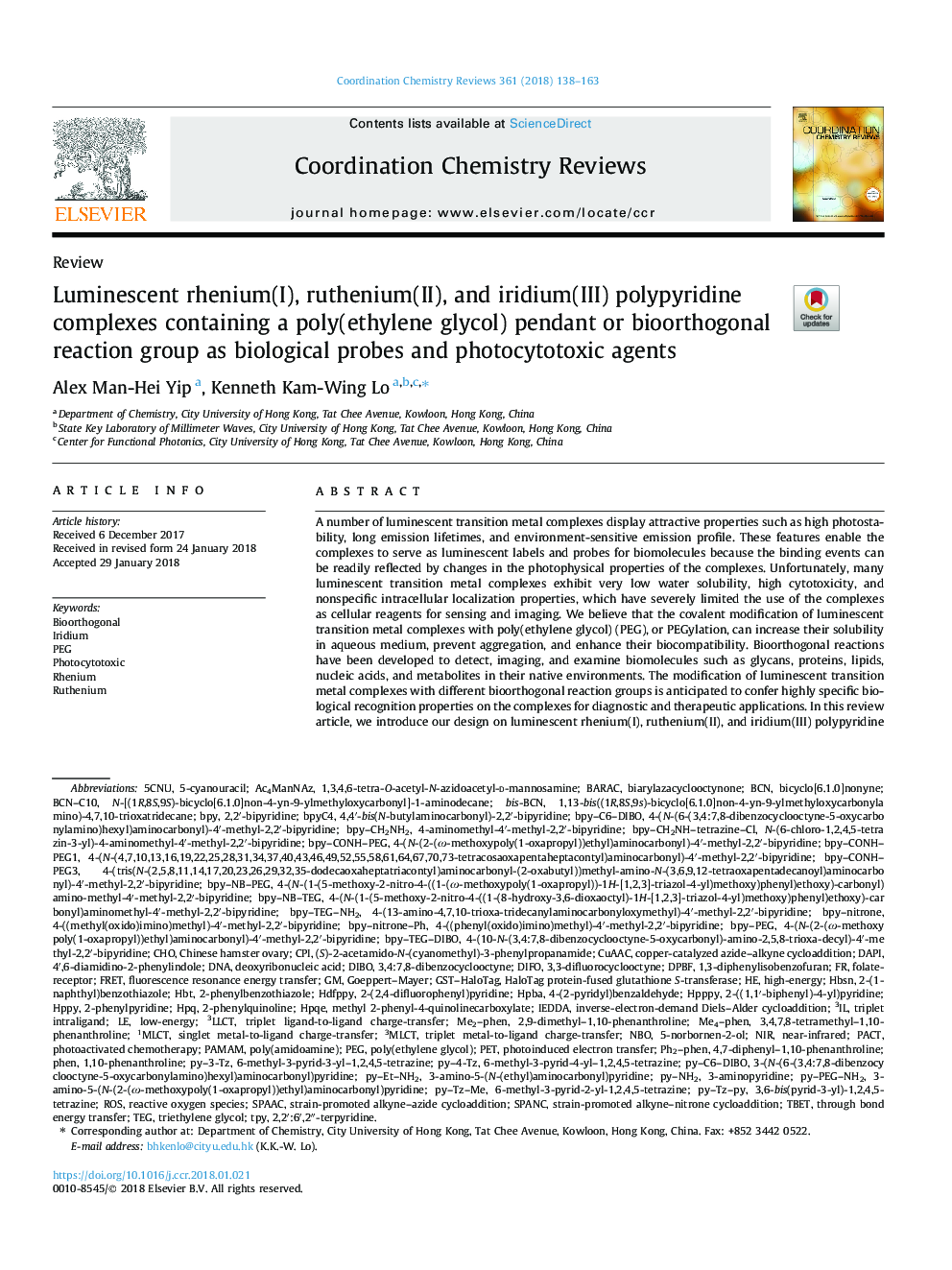| Article ID | Journal | Published Year | Pages | File Type |
|---|---|---|---|---|
| 7747637 | Coordination Chemistry Reviews | 2018 | 26 Pages |
Abstract
A number of luminescent transition metal complexes display attractive properties such as high photostability, long emission lifetimes, and environment-sensitive emission profile. These features enable the complexes to serve as luminescent labels and probes for biomolecules because the binding events can be readily reflected by changes in the photophysical properties of the complexes. Unfortunately, many luminescent transition metal complexes exhibit very low water solubility, high cytotoxicity, and nonspecific intracellular localization properties, which have severely limited the use of the complexes as cellular reagents for sensing and imaging. We believe that the covalent modification of luminescent transition metal complexes with poly(ethylene glycol) (PEG), or PEGylation, can increase their solubility in aqueous medium, prevent aggregation, and enhance their biocompatibility. Bioorthogonal reactions have been developed to detect, imaging, and examine biomolecules such as glycans, proteins, lipids, nucleic acids, and metabolites in their native environments. The modification of luminescent transition metal complexes with different bioorthogonal reaction groups is anticipated to confer highly specific biological recognition properties on the complexes for diagnostic and therapeutic applications. In this review article, we introduce our design on luminescent rhenium(I), ruthenium(II), and iridium(III) polypyridine complexes functionalized with a PEG or bioorthogonal reaction group as cellular reagents. The photophysical, photochemical, cellular uptake, and (photo)cytotoxic activity of these complexes are described and discussed.
Keywords
TEGHPBA2-(2,4-difluorophenyl)pyridineHppyTPY2-Phenylbenzothiazole3MLCTHPQSPAACbpyTBETBCNPACTCuAACDPBFDAPINIRCPINBO1,10-Phenanthroline1,3-diphenylisobenzofuran2-Phenylpyridine2-phenylquinoline2,2′:6′,2″-Terpyridine2,2′-Bipyridine3-Aminopyridine4′,6-diamidino-2-phenylindoleDNAROSdeoxyribonucleic acidPhotoinduced electron transferFluorescence resonance energy transferFREThigh-energyIridiumChoBioorthogonalChinese Hamster OvaryTriethylene glycolHBTRheniumRutheniumPhenNear-infraredPAMAMPETpoly(amidoamine)Poly(ethylene glycol)PEGLow-energyReactive oxygen species
Related Topics
Physical Sciences and Engineering
Chemistry
Inorganic Chemistry
Authors
Alex Man-Hei Yip, Kenneth Kam-Wing Lo,
